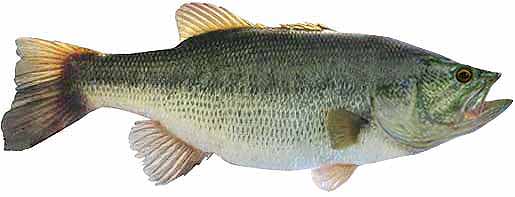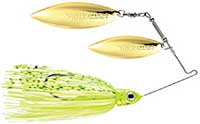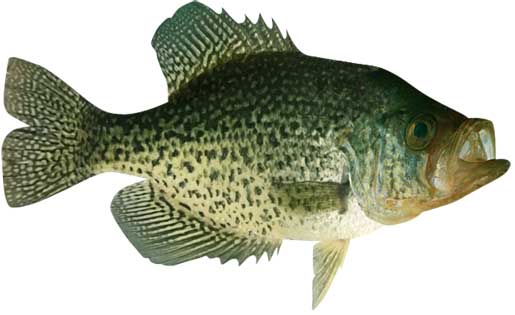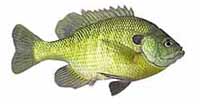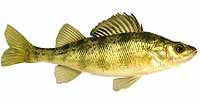Fishing Report For Lake Wilhelm, PA
By Rick Seaman
Last updated on .

Fishing Reports
Popular Fish Species Lake Wilhelm, PA
Largemouth Bass
Current Report: Good
FALL. Now that Fall is in full swing, bass here have moved shallow, following schools of baitfish into coves and shallow bays around 4 to 12 feet of water. If you enjoy fishing for largemouth bass in heavy cover, is your paradise. The upper, northern end, of the lake is thick with vegetation and holds plenty of largemouth bass. A wide variety of lures are catching nice largemouth bass here, but many tournament anglers are throwing spinnerbaits as a primary bait. Reports by locals indicate lots of 3 lb to 4 lb bass being taken with some consistency. Topwater, jerkbaits, crankbaits, and slow-rolled spinnerbaits are also catching nice bass. Later in Fall, as deeper water cools, bait and bass move out to ledges, channel edges, points and humps where flutter spoons, jigs and drop shots are often good choices in 12 to 18 feet of water.
WINTER. Winter will isolate largemouth around slightly deeper structure, flats, points and creek channels. They can be found from 12 to 24 feet deep. Here they hold, feeding less frequently, awaiting warmer water to return in Spring. Slow presentations are key to getting bites. On warmer days, especially during late afternoons, bass may move into 6 to 12 feet of water to feed.
SPRING. Once water temperatures rise into the low 60's, largemouth will move from deep wintering holes, to shallower water nearby spawning areas. Anglers report good topwater action from mid Spring through Summer, especially early in the morning, and on cloudy days. Vibrating jigs, jerkbaits and spinnerbaits typically get bites just away from the shoreline. At this time they are feeding aggressively in about 3 to 12 feet of water, and preparing for the spawn. Once water warms into the mid to high 60's, they will move into 2 to 5 feet of water, and create nests, then lay their eggs. Immediately afterwards, females move to deeper water and males remain to guard the eggs, and then the fry. After a couple weeks, the males also move to slightly deeper water, around 6 to 20 feet deep. Deep-diving crankbaits, vibrating jigs, plastic worms, jigs, worms, and swimbaits catch bass during this period.
SUMMER. Water temperatures will warm considerably in Summer. Bass will feed shallow, early and late in the day, where they will be caught in 6 to 12 feet of water, on square-bill crankbaits and spinnerbaits. Wacky-rigged stick worms always catch finicky bass when the bite is slow. Largemouth bass here feed on shad, small sunfish and crawfish. During the hotter parts of the day, they are being caught on points, channel edges, and ledges 15 to 20 feet deep. Some of the best reports seem to be from anglers fishing around deep edges of flats, submerged islands and channel edges.
Black Crappie
Current Report: Poor To Good
Although the average crappie in Lake Wilhelm is not bragging size, there are reports of crappie in the 4-pound range being caught from time to time. Crappie love cover, and the lake is chocked full of cover from the Milledgeville Road Bridge, to the north end of the lake.
FALL. Baitfish, which have moved into shallow flats, coves and bays, have drawn crappie into these areas. Decent crappie are being caught while feeding heavily, in preparation for the cold Winter. Anglers report that 5 to 15 feet of water is where most bites are coming. Minnows, hair jigs, and crappie jigs, are good options during this feeding marathon. Late fall starts the migration deeper, toward winter holding areas, for both crappie and baitfish. Small flutter spoons, fished in 15 to 25 feet of water, are a good option during this transition. Good results are coming around points, creek channels, and brush piles.
WINTER. Once the shallows start cooling rapidly, crappie will migrate to deeper holding areas, mostly off shore. At this time they are typically caught using a very slow presentation, in 10 to 20 feet of water. Most are caught around deep brush piles, creek channel bends, submerged timber, and main-lake structure. If they are suspending in open water, they often relate to some cover, or structure change, directly below them. During warming trends, especially warm afternoons, they are drawn into 6 to 12 feet of water to feed.
SPRING. In early Spring, crappie begin staging in 5 to 15 feet of water, just outside spawning bays and shallow flats. Spring is prime time to be on the water, as crappie have moved shallow to spawn. At that time, they are typically caught in 2 to 8 feet of water. Vegetation, docks, brush and wood are where most anglers catch crappie using small crappie jigs or live minnows. After the spawn, crappie typically move outside the spawning area and hold on cover close by, in 6 to 12 feet of water. Once they move deep, anglers report success using fish finders and forward facing sonar to locate schools of crappie, which tend to stack vertically around cover. Light tackle, with 4 lb to 8 lb line, is a popular choice. Later in Spring, focus on shallower flats around 5 to 15 feet deep.
SUMMER. Water temperatures get quite warm, and crappie fishing is usually pretty good. They feed in 8 to 15 feet of water early and late in the day, until the hot Summer sun causes them to retreat to depths of 12 to 18 feet. Also, a few have embedded in the shade of slightly shallower vegetation. This is a good time to focus around brush piles, standing timber, deep lay downs, bridge pilings and deeper docks. Anglers are also locating schools of crappie hanging over deep structure and around creek channel edges, using fish-finder electronics.
Northern Pike
Current Report: Good
Although Lake Wilhelm is not one of the top pike lakes in the state, there are some considerable catches to be had for those who like chasing northern pike.
FALL. As the weather starts turning cold, water temperatures cool fastest in the shallows. This brings baitfish into shallower waters, and northerns follow along with this food source. They hang around weedbed edges, main-lake points, reefs, and rocky shorelines to ambush prey in 4 to 12 feet of water. This is a prime feeding time as they prepare for winter. It is also a good time to catch a trophy pike.
WINTER. Pike remain active in Winter, often congregating in or near remaining weedbeds, especially along the edges. Other structure options include long points, reefs, ledge drop-offs, and rocky humps, ideally nearby deeper water. When the lake has safe ice in winter, ice fishing for northern pike can be quite thrilling. Portable fish finders can be a big help. At times, when oxygen is depleted in deeper water, northerns suspend directly under the ice, where maximum oxygen is available. Other times they hold on structure in 8 to 18 feet of water, sometimes deeper.
SPRING. After ice out, northern pike migrate to shallow, warmer pockets, bays and coves. Once water temperatures reach around 40 degrees, they move into even shallower areas with vegetation, to spawn. Ideal depths range from 2 to 10 feet. After spawning they linger in the shallow bays for a short period. Once water temperatures rise into the 50's, they move to deeper weedbeds and shallow structures adjacent to even deeper water. Bright colors, whites and flashy lures appeal to these predators. Noisy topwater lures can also produce some spectacular strikes. Alternate between baits until you identify which one triggers the most bites for the day.
SUMMER. Northern pike scatter all around the lake, rather than gather in groups. This makes them difficult to locate. During the day they are holding from 5 to 16 feet deep, around vegetation, on ledges, reefs, rock piles, islands and channel edges. Some of the larger specimens are suspending in open water, just outside feeding areas. Trolling or drift fishing produces some nice catches, using spoons, big spinners, cut bait, and deep diving crankbaits. Early and late in the day, they move shallow to feed and can be caught around most weedy shorelines, in 5 to 10 feet of water. Noisy topwater lures, spinnerbaits and Johnson spoons with curly-tail grubs, are catching nice pike shallow.
Fishing Video
Fish species to fish for...
Guide to fishing for largemouth bass, smallmouth bass, channel catfish, black crappie, walleye, bluegill, yellow perch, muskie and northern pike at Lake Wilhelm in Pennsylvania.
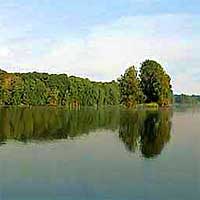 Lake Wilhelm is a 1,740 acre reservoir with nearly 100 miles of shoreline. It is home to numerous species, but is best known for largemouth bass, crappie, northern pike and yellow perch. Additionally, reports that fishing for walleye, muskellunge, bluegill, catfish, and sunfish are also pretty good.
Lake Wilhelm is a 1,740 acre reservoir with nearly 100 miles of shoreline. It is home to numerous species, but is best known for largemouth bass, crappie, northern pike and yellow perch. Additionally, reports that fishing for walleye, muskellunge, bluegill, catfish, and sunfish are also pretty good.
Primary fish species to catch
Click images for fishing tips and details about each species.
Today's Weather & Forecast
Fishing Boat Rentals
Click here for fishing boat rentals.
Marinas
Click here for marinas.
Public Boat Launch Ramps & Landings
Click here for boat ramps.
Fishing License
Click here for a Pennsylvania Fishing License.
Map - Fishing & Access
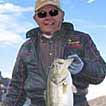 Rick Seaman is a fishing enthusiast with over five decades of fishing experience, a retired tournament fisherman, author of numerous published articles on fishing, and co-author of the book "Bass Fishing - It's not WHAT you throw, It's WHERE you throw it".
Rick Seaman is a fishing enthusiast with over five decades of fishing experience, a retired tournament fisherman, author of numerous published articles on fishing, and co-author of the book "Bass Fishing - It's not WHAT you throw, It's WHERE you throw it".
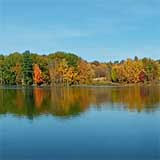 Contact Information
Contact Information
Maurice K. Goddard State Park
684 Lake Wilhelm Rd
Sandy Lake, PA 16145
724 253-4833
Fishing lakes in each state
110425
Lake Wilhelm, Pennsylvania Report
PENNSYLVANIA


Bass, muskie and catfish fishing in northwest PA.


